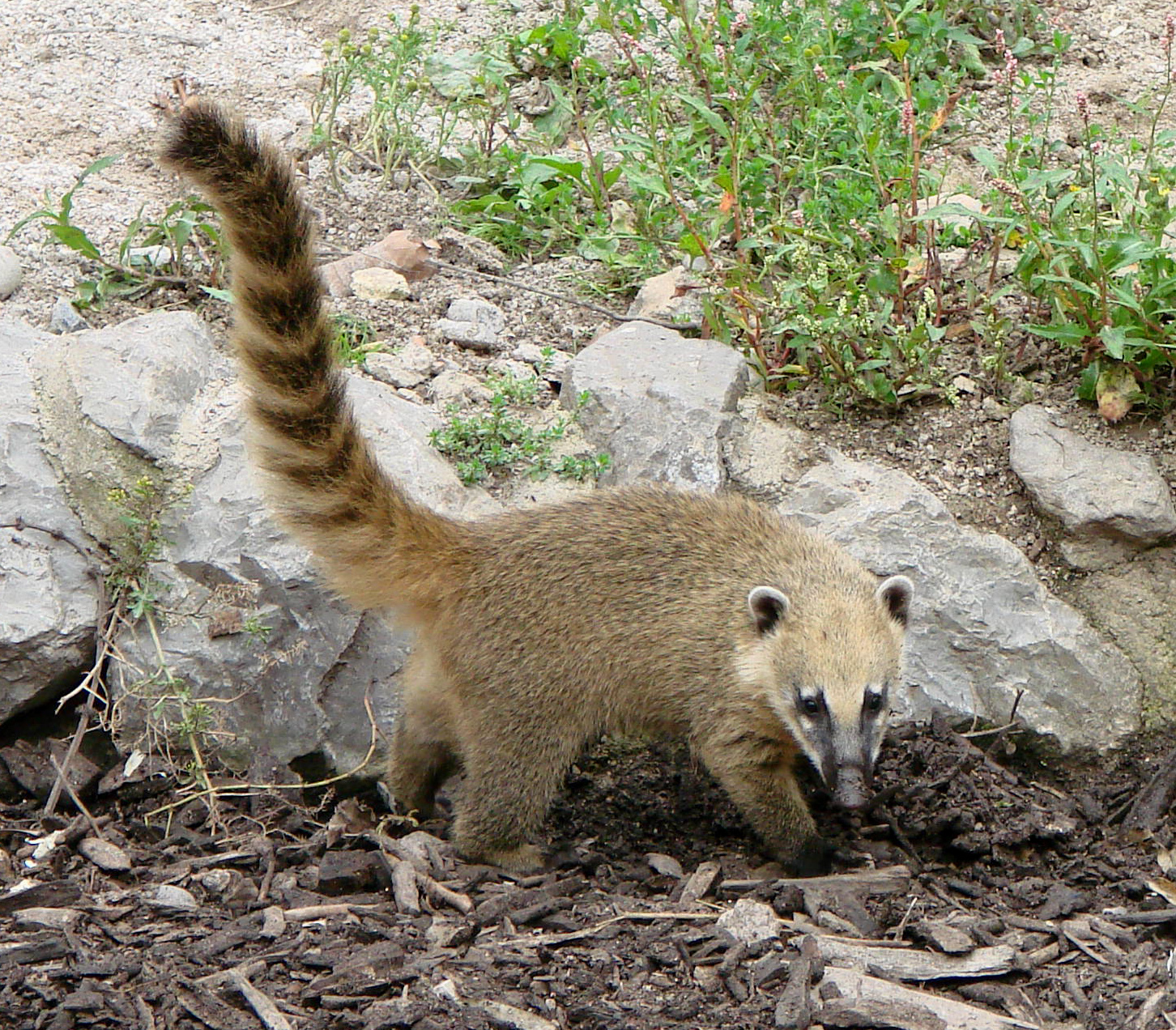Coatis are captivating creatures native to Central and South America, known for their playful nature and unique social structures. These members of the raccoon family, Procyonidae, boast a distinctive long snout and a ringed tail, making them easily recognizable. With their curious demeanor, coatis often draw the attention of wildlife enthusiasts and researchers alike. Their adaptability to different habitats allows them to thrive in various environments, from tropical rainforests to arid regions.
These intelligent animals are social by nature, often found in groups called "bands" that can consist of up to 30 individuals. The dynamics within these groups are fascinating, with females typically leading the way and males often remaining solitary outside of mating season. Coatis are also known for their remarkable foraging skills, utilizing their agile limbs and keen sense of smell to search for food, which primarily consists of insects, fruits, and small animals.
As we delve deeper into the lives of coatis, we uncover their behaviors, habitats, and conservation statuses. This article aims to provide a comprehensive overview of coatis, addressing various aspects of their existence and importance in the ecosystem. Join us on this journey to learn more about these remarkable animals and their role in the natural world.
What Are Coatis?
Coatis, belonging to the family Procyonidae, are medium-sized mammals that are closely related to raccoons. Their scientific name is Nasua, and they are characterized by their elongated snouts and long, flexible tails. Coatis have a unique appearance, with a sturdy body covered in coarse fur that can vary in color from brown to reddish hues. Their distinctive facial markings, including a mask-like pattern around the eyes, add to their charm.
Where Do Coatis Live?
Coatis are widely distributed across Central and South America, occupying a range of habitats, including tropical forests, savannas, and even mountainous regions. Their adaptability to different environments makes them a versatile species, capable of thriving in various ecological niches. They prefer areas with abundant vegetation, as it provides cover and access to food sources. Coatis are also known to inhabit urban areas, where they forage for food scraps.
What Do Coatis Eat?
Coatis are omnivorous foragers, meaning their diet consists of both plant and animal matter. They primarily feed on:
- Insects
- Fruits
- Small mammals
- Bird eggs
- Roots and tubers
Using their keen sense of smell and dexterous front paws, coatis skillfully dig through leaf litter and soil to uncover hidden food sources. Their varied diet allows them to adapt to different seasonal food availability, ensuring they can find sustenance throughout the year.
Are Coatis Social Animals?
Yes, coatis are highly social creatures, often living in groups called "bands." These bands typically consist of females and their young, while adult males tend to be more solitary. The social structure within a band is matriarchal, with females leading the group and engaging in cooperative behaviors, such as grooming and caring for the young. This social dynamic helps strengthen bonds and ensures the survival of the group.
How Do Coatis Communicate?
Coatis utilize a variety of vocalizations and body language to communicate with one another. They can produce chirps, growls, and whistles, each serving a specific purpose. For instance, alarm calls alert the group to potential threats, while playful vocalizations signal a relaxed and friendly atmosphere. Additionally, coatis use their sense of smell to gather information about their surroundings and other individuals in the band.
What Are the Threats to Coatis?
Despite their adaptability, coatis face several threats in the wild. Habitat loss due to deforestation and urbanization poses a significant risk to their populations. Additionally, hunting and poaching for their meat and fur further threaten their survival. Climate change also impacts their habitats, leading to shifts in food availability and increased competition with other species.
How Can We Conserve Coatis?
Conservation efforts are essential to protect coatis and their habitats. Here are some strategies that can be implemented:
- Promoting sustainable land use practices to preserve natural habitats.
- Creating protected areas to safeguard coati populations.
- Raising awareness about the importance of coatis in the ecosystem.
- Supporting wildlife rehabilitation programs for injured or orphaned coatis.
By taking these steps, we can help ensure the survival of coatis and maintain the biodiversity of the regions they inhabit.
Conclusion: Why Are Coatis Important to Our Ecosystem?
Coatis play a vital role in their ecosystems as foragers and seed dispersers. By consuming a variety of fruits and insects, they contribute to maintaining the balance of plant and animal populations. Their social behaviors also promote healthy group dynamics, which can influence the overall health of the ecosystem. Understanding and protecting coatis is essential for preserving the intricate web of life that exists in their habitats.
In conclusion, coatis are fascinating creatures that deserve our attention and protection. Their unique social structures, foraging behaviors, and adaptability make them a crucial part of the ecosystems they inhabit. By learning more about coatis and advocating for their conservation, we can ensure that future generations have the opportunity to appreciate these remarkable animals.
Article Recommendations
- Joanne Kelly Height Unveiling The Stars Stature
- Unlocking The Meaning A Guide To The Colors Of The Heart
- Brandon Aubrey Misses Crucial Extra Point Gameteam


